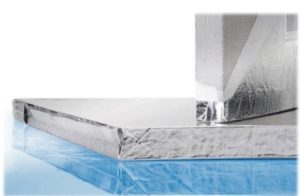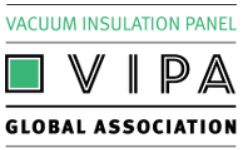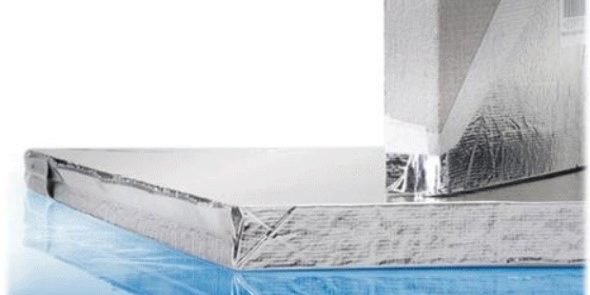
The Vacuum Insulation Panel (VIP) is a ultra-thin and high-performance insulating material that can be up to 20 times more efficient than traditional insulation products. The VIP provides optimum energy efficiency while preserving the useful volume of household appliances, temperature controlled packaging or refrigerated transport systems.
A Vacuum Insulation Panel consists in a highly porous and rigid core material wrapped in an ultra-barrier to gas film.
The combination of porous material and vacuum results in extremely high thermal resistance. The first VIP was manufactured in 1930 from a porous material sealed by rubber. Nanostructured materials appeared in the 1960s. In the 1950s, a wool fiberglass was welded to a steel panel. The development of VIP intensified and the first precipitated silica VIP appeared in the 1990s.
ADVANTAGES
The thermal conductivity of a PIV with a smoky silica core is about 0.004 W / (m.K)
In comparison, the thermal conductivities of conventional insulation materials are between 0.030 and 0.040 W / (m.K)
VIP technology provides:
- Extremely low insulation thicknesses (10 mm to 25 mm), increases the volume capacity of applications when the thickness of the insulation is a problem (refrigerators, insulation of old buildings)
- Its thermal performances are stable in the long run, when properly installed and well protected against perforations.
CORE MATERIALS
Core materials for VIP requires a completely porous and open structure in order to evacuate the gases. It must also have a compression resistance high enough to carry the mechanical pressure load. The classes of core materials are either powders, fibers or microporous froth. Each structure has inherent solid mechanical properties.
The core material should have the lowest possible thermal conductivity to ensure the best performance of the VIP. The optimum materials have a microporous structure and are able to absorb moisture. Otherwise absorbers must be added. The most common core materials are fumed silica and glass fibers. In some cases, open cell polymer froth is used. For example, special froth made in polyurethane or polystyrene.
ENVELOPE MATERIALS
Gas impermeability is the main factor influencing the selection of envelope materials for VIP.
In addition, low thermal conductivity is also vital to maintain the lowest thermal bridge effect (along the edges of the board). Due to the mechanical loads during construction, the envelope materials must also have sufficient puncture resistance.
Most VIP manufacturers use complexes of several highly loaded metallized plastic films or aluminum foils which are laminated to another welding plastic film to seal the panel.
In order to guarantee the longest lifetime of the VIP (up to 30 years for building applications!), Multilayered complexes must retain their very high gas barrier after accelerated tests under severe temperature conditions and humidity (70°C / 90% humidity for example). As a result of these tests, no degradation should be visible or observed and the barrier properties should be preserved both in the center of the panel and at the welds.
VIPA (Vacuum Insulation Panel Association)
 An association bringing together the main players in the VIP market was created in August 2014 by ten founding members.
An association bringing together the main players in the VIP market was created in August 2014 by ten founding members.
The VIPA International Association represents the interests of companies that manufacture and supply equipment and/or materials to the vacuum insulation panel industry. The association is also open to research institutes and academic organizations interested in supporting the work of VIPA International.
VIPA International’s mission is to promote the industry of vacuum insulation boards around the world, to raise awareness among stakeholders of energy savings while preserving space and costs and also to reduce carbon dioxide emissions in a wide range of applications.
VIPA contributes to the creation of international standards for VIP market.
More information : http://www.vipa-international.com

